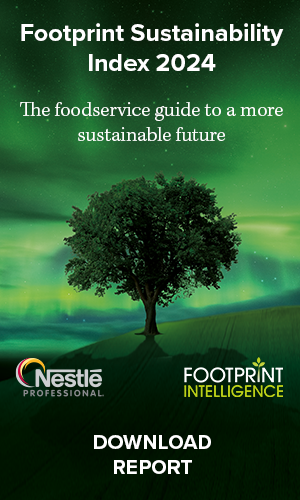ONLY MACKEREL caught by the best method is given revised ‘fish to eat’ rating by the Marine Conservation Society.
The Marine Conservation Society (MCS) has refined its ratings for mackerel to help consumers better differentiate between the various fisheries involved in catching this once-sustainable seafood favourite.
With the Faroe Islands and Iceland still continuing to set mackerel quotas outside of international agreements and scientific advice, MCS has separated out these fisheries to encourage consumers to source the most sustainable mackerel caught by the EU and Norway.
In January MCS removed all mackerel, an oily fish, which is packed with Omega 3, from its ‘Fish to Eat’ list and rated it as a fish to eat only occasionally. The change in fortunes for the species came about as a the result of overfishing of the stock and the subsequent suspension of the north east Atlantic stock’s Marine Stewardship Council certification, meaning it was no longer considered a sustainable fishery.
Mackerel caught by EU and Norwegian vessels remains a “fish to eat with caution” and has a three rating, whilst the highly sustainable South West hand-line fishery, caught using traditional methods by fisherman off the Cornish coast, now qualifies as a ‘Fish to Eat’ and is rated two.
MINSA (Mackerel Industry Northern Sustainability Alliance) countries – the EU and Norway – are committed to a binding long-term fisheries management agreement with strict quotas for their vessels to ensure the long term health of the stock, based on ICES (International Council for the Exploration of the Sea) advice. Fish caught in these fisheries are rated three, as a fish to eat “with caution”.
Neither Iceland nor the Faeroes have entered an equivalent long-term international management plan. Their total catch is now far in excess of what has been scientifically recommended and previously agreed upon by all participating countries. Without a solution, the North East Atlantic mackerel stock is set to be overfished to the tune of 200,000 tonnes annually. To reflect the aggressive quota increases from both these nations and their failings in less selective fishing practices, both have been rated four.
At a glance:
The MCS ratings show:
Best Choice: Cornish hand-line caught mackerel (2)
Best Alternative: UK / EU / Norwegian pelagic caught mackerel (3)
Least Sustainable: Icelandic and Faroese pelagic caught mackerel (4)
MCS Fisheries and Aquaculture Programme Manager, Jim Masters, says the revised ratings reflect the current uncertain situation within the mackerel industry: “There appears to be no end in sight to the political tug-of-war over mackerel in the North East Atlantic, and MCS remains very concerned for the fish stocks that have been caught in the middle. These ratings better reflect the damaging effect the political stand-off is having on mackerel stocks and the wider marine environment. The political impasse is playing a dangerous game with fish stocks, resulting in the twin perils of poor fisheries management and increasing levels of by-catch.”
Jim Masters says the best choice for mackerel remains fish caught locally using traditional hand lining methods: “It’s without doubt the most sustainable method of fishing for mackerel and other species. It is labour intensive but produces quality fish which should attract a premium price. Any market flooded with poor quality fish that drives down both prices and sustainability is bad news for everyone”.
Consumers can get the very latest sustainable seafood advice by logging on to www.fishonline.org where the latest Pocket Good Fish Guide can also be downloaded allowing shoppers to take the most up-to-date advice with them to the fish counter.











